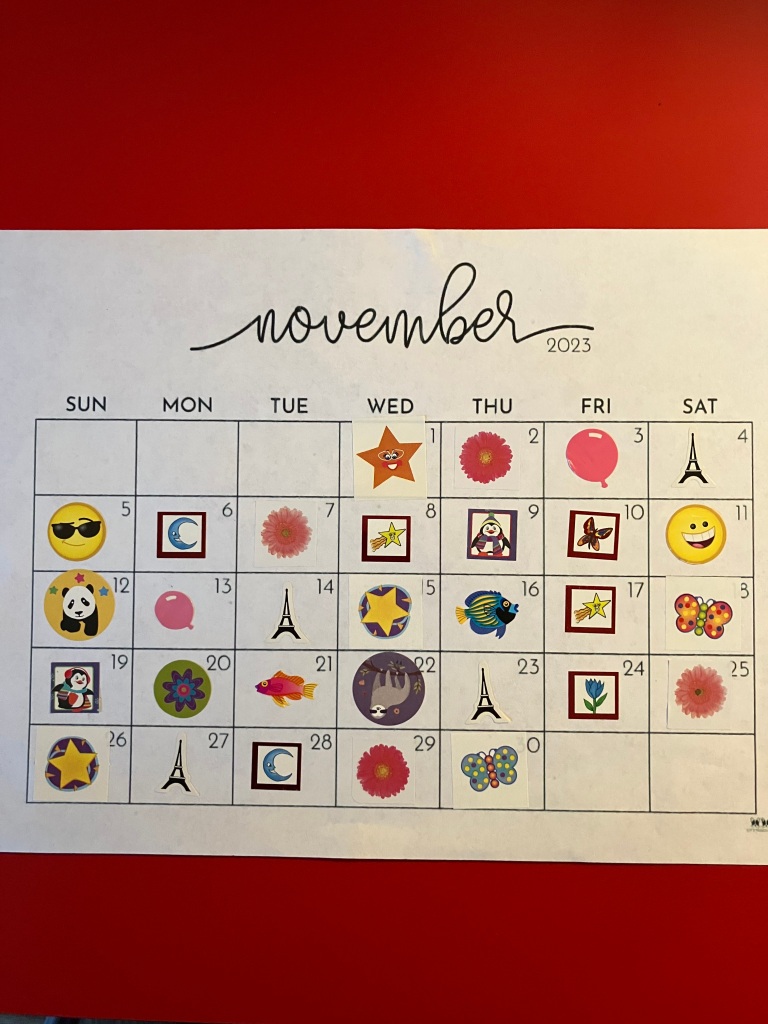If you’re a fiction writer, or live with a fiction writer, you’re most likely familiar with NaNoWriMo, which is the abbreviation for National Novel Writing Month. NaNoWriMo takes place each November, with writers committing to work towards the goal of writing the draft of an entire novel (50,000 words) in one month.
NaNoWriMo started back in 1999, and since then it has become a worldwide phenomenon. Writers find community, encouragement, resources, and support by participating and connecting with other writers going through the same process.
I don’t write fiction, and the sheer number of daily words required (50,000 words over 30 days works out to about 1,667 words a day) didn’t feel attainable for me, so I never participated in NaNoWriMo.
Until this year.
And it’s all because of Sandra Postma. (You may remember I wrote about Sandra and the incredible work she does as a Book and Spoonie Coach in a blog post back in October. In case you missed it, you can click here to read the post.)
On her Instagram, Sandra encouraged spoonie writers to participate in NaNoWriMo in a way that worked for each of us. She pointed out that as people who live with chronic illness, we’re accustomed to modifying a variety of activities. Why should NaNoWriMo be any different? Sandra encouraged us to participate in a Spoonie NaNoWriMo — one with individual goals that work for each writer. That I could do.
Being a former teacher, I printed out the goals I set for my NaNoWriMo, as well as a November calendar. Each day I met my goal, I put a sticker in the calendar box. (Again, former teacher. Plus I had all these cute stickers on-hand.)
My Spoonie NaNoWriMo Goals, as I printed them out:
Each day in November I will:
Complete a 5-minute writing exercise.
Write down one statement, acknowledging something I did,
something my body was strong enough to do.
And I did it! (Note all the stickers!)
It certainly wasn’t easy. There were days I was tempted to skip the whole thing, but I’m glad I didn’t. The hardest part was the daily statement, a note of appreciation and gratitude for things my body is still strong enough to do, because I’m not used to highlighting myself in this way.
My statements tended to acknowledge a “bigger” outing or activity — taking down and putting away our Halloween decorations, decorating for Thanksgiving, grocery shopping (though I no longer do that by myself), a longer walk in the neighborhood.
While those “bigger” activities were worth documenting, writing this list helped me see how hard I work each day, how much I continue to do each and every day, and all while my pain has consistently been more and more intense.
For instance: I make the bed each morning. I pick up my own prescriptions at CVS. I shower each night. I never skip brushing my teeth. I get dressed each day, complete with my daily jewelry (nine rings on eight fingers, bracelets, earrings, necklace).
The unexpected result of my Spoonie NaNoWriMo is the feeling of achievement and pride — in my writing, yes, but also in myself!
Dear Readers, anyone else participate in a version of NaNoWriMo? How did it go for you? Let me know in the comments.
